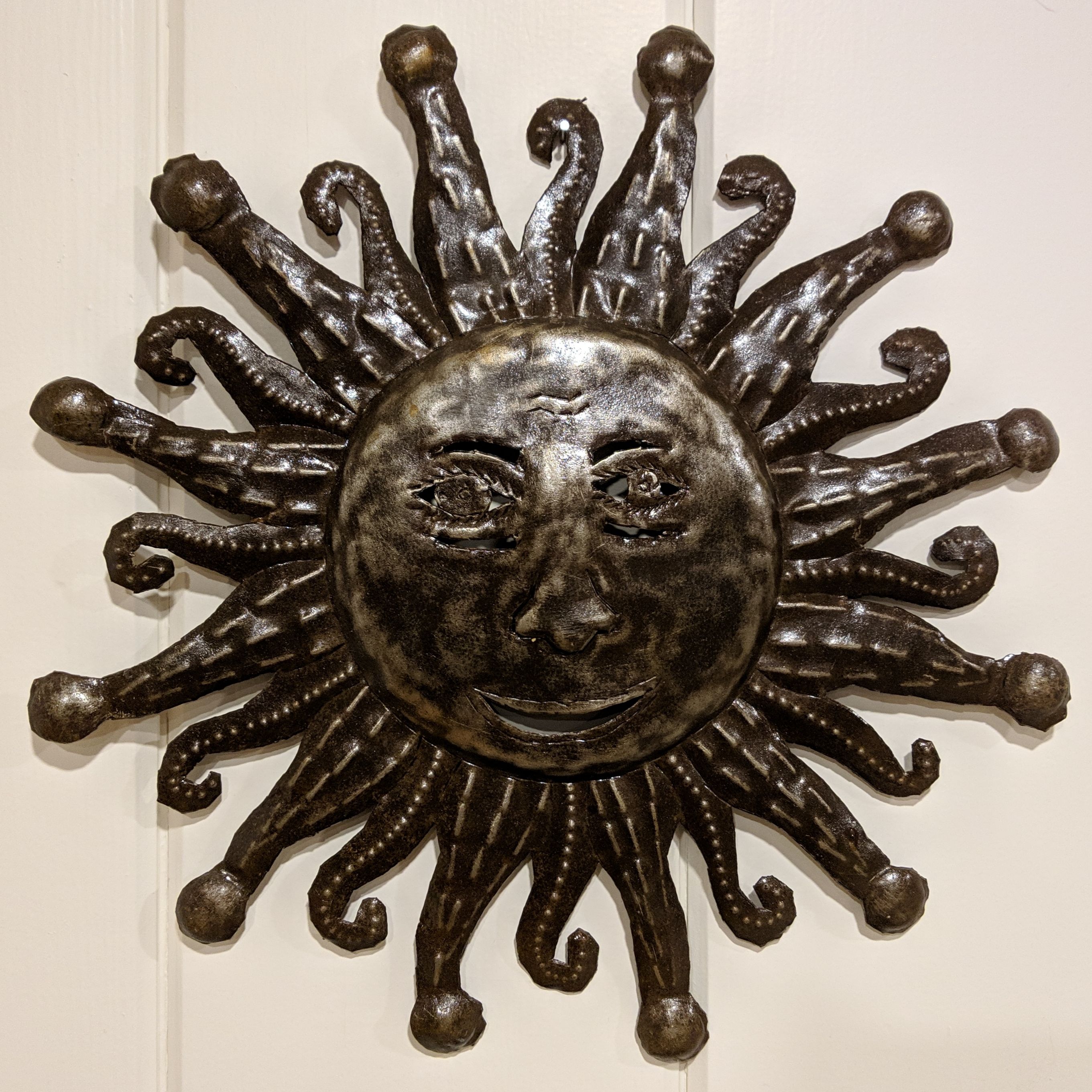What are the best practices you’ve learned to save time or make a meal better.
Ok I might get downvoted to oblivion but I use MSG. It enhances the flavors so much that I have stopped going to restaurants.
Edit- I did my research and found no credible source that says MSG is harmful.
Edit2- If you go to a restaurant or order KFC chances are they use MSG as well
Anti-MSG propaganda actually comes from Asian racism, and was born out of the idea that Chinese food with its MSG was causing headaches and other health effects that were entirely made up. MSG is perfectly fine for you, and it makes a ton of things even tastier. I use it all the time in home cooking.
There is nothing wrong with MSG. It being bad for you is made up by racists.
Uncle Roger agree with you!
Hahaha true
- Nothing goes on a plate without being tasted
- If it’s too sour, add sugar
- if it’s sweet and you haven’t added acid, add a splash of vinegar.
- if it’s too hot, add fat
- if you burn it, throw it out.
- IF you taste it early, it should taste weak. If it’s fantastic when when it starts to simmer, it’ll be too harsh once it’s reduced.
- Taste it and it tastes empty or boring? Smell it. Smell all your herbs/spices on hand, which ever one it smells the closest to, add a healthy pinch and salt if it doesn’t taste salty already.
- know your oils and use the right ones. Olive oil can handle some heat and is great for savory, grapeseed is almost flavorless. Canola has a distinct flavor that doesn’t go with everything. 9 season your meat before you cook it.
Only thing I’d add is that, on 8, learn what rancid oil smells like. Most people keep things like olive oil in poor conditions (that’s without us even getting into quality of oil, or how people buy FAR MORE oil than they’ll reasonably be able to use), and the oil goes bad far faster than they think it will.
Butter makes everything better
This is why restaurant food tastes so good. Fat is flavor. But beware, restaurants don’t give a shit about your cholesterol. They want you to have good food that you want to come back for. They’ll give you butter and grease all day long. You can cook tasty food at home that won’t clog your heart, but it takes a lot to meet the flavor standards of bacon or butter using poultry or vegetable oil. The trick is moderation. Not every meal needs to be a greasy bacon cheeseburger, but you don’t have to completely boycott that either.
When I have to use parchment paper, I crumple the paper ip into a little ball first, then press it out flat into the cooking vessel (sheet pan or loaf pan or whatnot) and it lays flatter/conforms to the pan better without rolling up all over the place rather than trying to just use a pristine sheet of parchment. It really works great.
LPT - go buy a box of half-size sheets from a restaurant supply store. Webstaurant was my go to until they sent their shipping prices into the stratosphere. I buy 1000 sheets at a time and store it with the sheet pans (the box is only a couple inches tall) and it lasts forever. Costs about $50-60 a box iirc which is way cheaper than buying in rolls.
Often recipes are really inefficient and sequenced wrong… Read the whole thing and find the “long pole” , and do that first… could be starting the oven preheat early, starting the rice cooker right away vs at step 6 or run things in parallel.
Unless baking or doing a watery/clear soup, never add just water. Anything with flavor that matches the style of cooking will be better… could be just stock/boujong, wine, beer, cola or acids like vinegar or fruit juices, clam juice, etc. Anything liquid is an opportunity to add flavors.
Reverse taring - instead of placing the bowl on the scale and taring before weighing, place your ingredients on the scale and tare, and you can then scoop out and see the negative weight of how much you have used. This is especially helpful if you are trying to weigh an ingredient into a hot pan you can’t just set on the scale
Now that’s a great idea. Timesaver too.
By far my favorite is to have a squirt bottle of water next to my stove. It’s great to have throughout the cooking process, especially if you’ve moved on from Teflon bullshit and are using a pan you pre-heat. To start, you put the pan on the heat and squirt a little water in it. When the water evaporates, the pan is usually in the 350F-400F range. Then when the pan is dry and heated a little more, you can squirt a few more drops in to see if the Leidenfrost effect has taken, uhhh, effect. The way you tell is that the water just dances around on the pan instead of behaving like water normally does, and it’s how you know your food won’t stick, it is at this point that you add the oil.
Moving on to the actual cooking, let’s say you’ve thrown some chicken thighs in the pan and you’ve built up a lot of fond (the brown bits that form in the bottom of the pan) and the chicken is almost done, but you’re not planning on making a sauce. Deglaze the pan with little squirts of water targeted directly at the fond and rub the chicken thighs over the area where the water is deglazing and suddenly that fond is sticking to your chicken thighs, resulting in a better crust and a cleaner pan.
Speaking of cleaner pan, once you’re done cooking and plating and you have a hot dirty pan, squirt enough water in to cover the bottom of the pan and then go eat. When you come back to the kitchen to clean up, the water will have broken down the shit on the bottom of the pan and will steam the sides of the pan, so the pan will wipe clean as easy if all you did was fry an egg.
Finally, I stopped putting milk (of any variety) in my coffee, but I wanna be able to drink my coffee right away and it’s too hot when it’s made fresh, but I’ve got a bottle full of room temperature water (all the filtered water in my house comes out ice cold) sitting right there so I can cool it down that way (I brew my coffee pretty strong so watering it down isn’t a big deal).
on the pan test, I just run a bit of water onto my hand and flick droplets off my fingers. My reason is that I absolutely LOATHE having anything plastic near the stove. I’ve had far more mishaps involving errant plastic containers than any other.
Besides, If my hand bacteria can make it into the water and survive a 300+ degree pan, it deserves to outlive all of us.
I’ll echo the other comment about deglazing with other flavorful juices to make a better pan sauce (even if it’s not going to be a sauce), since I just prefer it that way. BUT, a splash of water into a pan sauce that’s simmered for too long WILL restore its glossiness and re-thin it.
Very interesting, ty 4 sharing! Never heard of this but will definitely give it a try. I’ve got a spare unused squirtbottle already too
Removed by mod
The problem with squirting the oil into the pan as it heats is that the metal of the pan heats up a lot slower than the oil so you will burn the oil before your pan is up to temp. Also, pre heating pans will not harm them in any way at all. It sounds like you’re applying my comment to Teflon coated pans, which I excluded at the beginning of my comment.
Removed by mod
I definitely didn’t say to leave the pan on the hob for 20-30 minutes, it takes about 5 minutes. But if putting an empty pot or pan on the heat for 20-30 minutes ruins anything at all on your pans, you need better pans. Every single pan in my kitchen, and I have some budget ones, would just be too hot to handle for a while. On the oil handling the heat, your way puts more heat into the oil than my way and you are way more likely to burn your oil.
Removed by mod
Use a meat thermometer! All your meat will come out perfect, without being under or over cooked.
Highly recommend a meat thermometer to everyone. Great recommendation.
Thermoworks.
Removed by mod
Heterogeneity!
Mandolines are not you friend. They thirst for blood.
Seriously if you get one get a safety mandoline like the once for all brand.
Can confirm.
If you’re American, you don’t want to have to pay an ER bill when you slice the tip of your finger off, like I did.
Or pair it with a pair of kevlar gloves or similar. But yes, every commercial cook I know says the worst kitchen incident they’ve seen involved a mandolin.
Alton Brown recommends a Kevlar glove when using a mandolin.
Yup, two big and noticable scars on my fingers now. Didn’t lose digits thankfully. If I use that thing ever again I’m using the guard and just cutting what’s left with a regular knife.
Kevlar glove.
-
when dicing onions cut radially first, then slice across, it saves you that weird half slice that’s traditionally used for dicing onions.
-
I use cast iron for nearly everything, it survives a hundred years because it’s bulletproof not because it’s gingerly handled every time it’s removed from it’s velvet case. People dragged them around on Chuck wagons, you will not kill it with soap. Worst case it gets a little sticky and now you need to cook some bacon in it.
-
A splash of acid in your soup or stew at the end really wakes it up.
-
Never cook rice without at least a couple bay leaves. Ideally you’ll cook it in chicken stock as well, add flavour where you can.
-
The best chicken stock in a jar is Better Than Bullion. Hands down. No contest.
-
With a splash of oil you can cook eggs even in a sticky cast iron pan.
-
Always use hand protection of some kind with a mandolin. I’ve never seen a non-pro chef go without and not fuck up their hand. Even pros lose the tips of their fingers sometimes too.
-
If you want to recreate movie theater popcorn at home you need the following things:
A whirlypop or other stovetop cooker
Coconut oil, refined
Popcorn kernels, quality varies, find a good brand
Fine salt
“Popcorn oil” - this is butter flavored oil sold next to the kernels
Here’s what you do, set up a bowl to dump your popcorn in, throw some salt in the whirlypop with a spoon of coconut oil, and just a tiny glug of the popcorn oil, not much just a tad. Add your kernels, crank the heat to high and start cranking. Do. Not. Stop. The popcorn will begin to pop after an interminable wait. Keep cranking until it either gets hard to crank or the popping slows down significantly. Then quickly dump your popcorn into the waiting bowl. Do not add salt, you already did this, the fine salt will be well distributed this way. Add a bit of popcorn oil. Shake the bowl a bit to distribute, add more if desired etc. Then enjoy your movie theater popcorn.
It took me years to work out how to do it without the Naks oil, which I bought from a local popcorn shop for awhile.
A splash of acid in your soup or stew at the end really wakes it up.
What kind of acid are we talking about here, the weak stuff or the stuff that melts through your pot
/s
The kind that lets you see funny colors
That would definitely wake a soup up
-
Let your protein equalize to room temperature before you cook it. This is a great time to season it as well. Pat dry, then cook.
Rest any grilled or pan fried meat on a non-heated surface for at least 5 minutes after cooking.
“Carry Over Cooking” is a thing that usually results in overcooked food if you don’t account for it.
Learn to make a pan sauce. Easy, quick, and worth it.
That trick of reserving a cup of “pasta water” that you never do? Yeah…
Almost without exception dried herbs/spices go in at the beginning of the cooking process, and fresh go in at the end.
If you work with a group of people start having an “Autumn Potluck” at work. It’s perfect for trying out holiday recipes, before the holiday, and get back constructive feedback and/or nice compliments.
Biggest hack? Realizing that humans have been cooking for millennia, and that it’s in the best interest of big business to convince you that it’s difficult/expensive/extremely complicated.
You don’t NEED the fancy equipment every company out there is trying to sell you.
Not everything needs to be gorgeous on the plate, or a whole production to make.
The poorest people in the world cook delicious food every day.
For instance, you don’t need NEED a +$150 Japanese chef knife to cook at home. What you need is something that can hold an edge through general maintenance, a whet stone, a kitchen towel to dry off your blade immediately after you hand wash it, and a little bit of patience.
IKEA sells some surprisingly great single construction (steel blade, steel handle) knives, and their single body chef knife is like $25. Just get an honing rod for use before you start slicing, and a whet stone for periodic sharpening (there’s TONS of YouTube videos of all the different ways of sharpening your knife), and remember to wash and hand-dry after you’re finished. My chef knife cost me barely anything, and I’ve used it for years and years, and it still slices through a tomato without a problem. Also, I only cook for myself, so I can absolutely 100% guarantee my whet stone will “outlive” me.
That being said, a mandoline can save a lot of time, and a kevlar glove paired with that will save a lot of fingers.
Not exactly a mandoline, but I used to work at a place with a cheese slicer named “Old Nubby.” It had blooded the entire team at least once.
Did they ever learn to use protection?
Each one of them did after nubby took its toll
Legend has it the blood was never cleaned off either
Replace everything plastic with glass.
Any brand recommendations? My pyrex lids are all cracked. Probably shouldn’t have put them in the dishwasher…
I use plastic containers if something’s going in the freezer.
Generally I completely agree, but I do have an embarrassingly large number of deli containers in various sizes. Great for leftovers or drinking water.
Unless it’s a cutting board. Plastic cutting boards are great cause you can throw them in the dish washer.
But if you do this, replace it often. Tiny cuts make places for bacteria to grow and you end up cutting tiny bits of plastic into your food.












